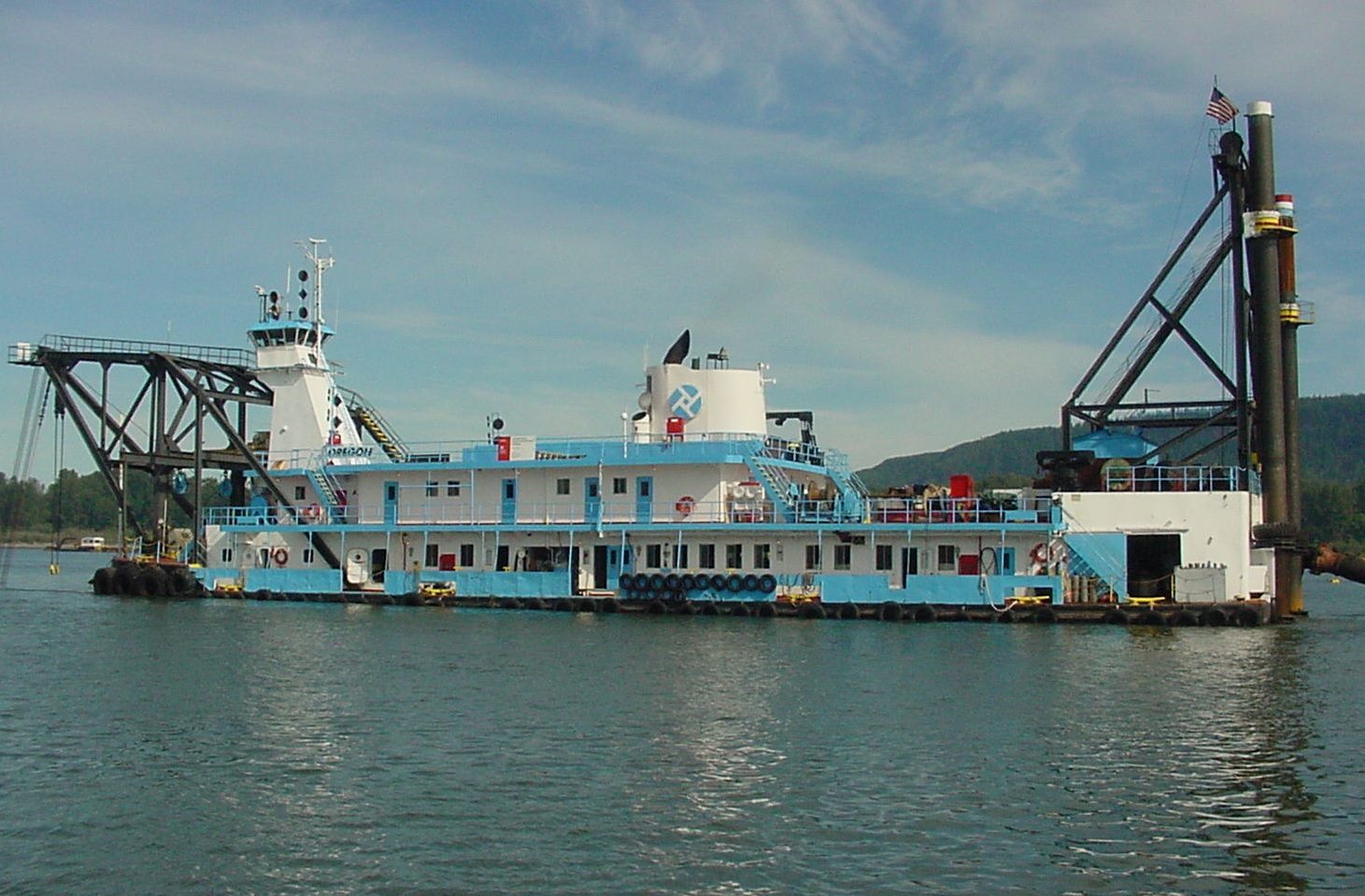Think of it as the mechanical equivalent of a heart transplant. Replacing the inner workings that power the Dredge Oregon will allow it to more efficiently and effectively maintain the region’s vital lifeline with international markets – otherwise known as the navigation channel. Starting next week, Harbor Acceptance Testing will stress test the Oregon before it begins the next chapter of its already long life on the river.
Since 1965, the Dredge Oregon has been the workhorse of the Columbia River, removing sand bars and other navigation hazards from the navigation channel. The dredge operates around the clock, typically from June through October each year, working from Tongue Point near Astoria and inland 103.5 miles to the Portland Harbor. In its lifetime, it has seen consolidation of the Port with the Commission of Public Docks, eruption of Mt. St. Helens and deepening of the channel to 43 feet. But the Oregon was pushing 50 at a time when the average age of a dredging vessel is 25 years.
The Port initiated an ambitious repower project in November 2012. In two phases, work was performed locally to replace the main engine and pump, generators, and a variety of other key components. The investment in upgrades will allow the Dredge Oregon to operate cleaner and more efficiently. It will reduce diesel particulate emissions by 88 percent and lower greenhouse gas emissions by 40 percent.
During the Harbor Acceptance Testing, the Dredge Oregon will be in the Willamette River simulating full scale operations using a small, governed pipeline. Water will be pumped during the testing, but the simulation will not involve any actual dredging and environmental precautions will be taken to ensure that the tests do not disturb fish or sediment. All aspects of the operation are fully vetted and closely monitored.
The Port serves as the U.S. Army Corps of Engineers’ local sponsor of the federal navigation channels of the Willamette and Columbia rivers. The Port owns and operates the dredge under contract with a crew of 42 employees. It is a non-propelled, cutter (suction) dredge with a steel superstructure and hull capable of dredging 1,000 to 1,200 cubic yards of material per hour.
Similar to road maintenance, dredges help ensure safe and efficient passage of ships carrying cargo to and from points around the globe. America’s Marine Highway System, as designated by the Maritime Administration, consists of more than 29,000 nautical miles of navigable waterways and the Columbia and Willamette rivers are a critical part of that system. Approximately 42 million tons of cargo moves through the deep draft lower Columbia River annually, valued at roughly $20 billion.
For more information about dredging and the Dredge Oregon, visit the Oregon History Museum’s new exhibit “Working on the River.”
Related Link:
Working on the River: A History of Dredging

